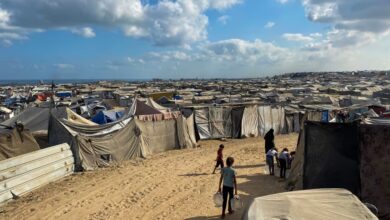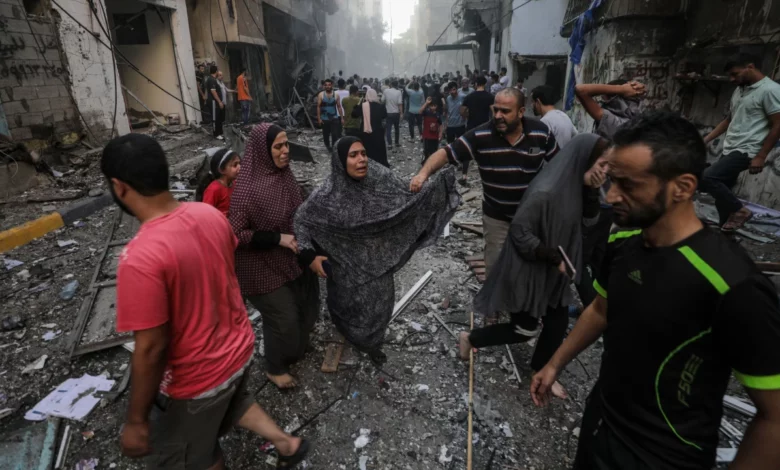
Israel’s military said Saturday its forces are readying for the next stages of the war, including “combined and coordinated strikes from the air, sea and land” in response to the unprecedented October 7 terrorist attacks by the Islamist militant group Hamas, which controls the enclave.
At least 1,300 people were killed during Hamas’ rampage in what US President Joe Biden described as “the worst massacre of Jewish people since the Holocaust.”
Further escalation of the long-running conflict now increasingly risks spilling over regionally, prompting the Pentagon to order a second carrier strike group and squadrons of fighter jets to the region as a deterrence to Iran and Iranian proxies, such as Hezbollah in Lebanon.
The clock is ticking for residents fleeing south through the battered streets of Gaza after the Israeli military told civilians to leave northern areas of the densely populated strip.
More than half of Gaza’s 2 million residents live in the northern section that Israel said should evacuate. Many families, some of whom were already internally displaced, are now crammed into an even smaller portion of the 140-square-mile territory.
Civilians packed into cars, taxis, pickup trucks and donkey-pulled carts. Roads were filled with snaking lines of vehicles strapped with suitcases and mattresses. Those without other options walked, carrying what they could.
“We will commence significant military operations only once we see that civilians have left the area,” Israel Defense Forces (IDF) spokesperson Lt. Col. Jonathan Conricus told CNN early Sunday. “I cannot stress more than enough to say now is the time for Gazans to leave.”
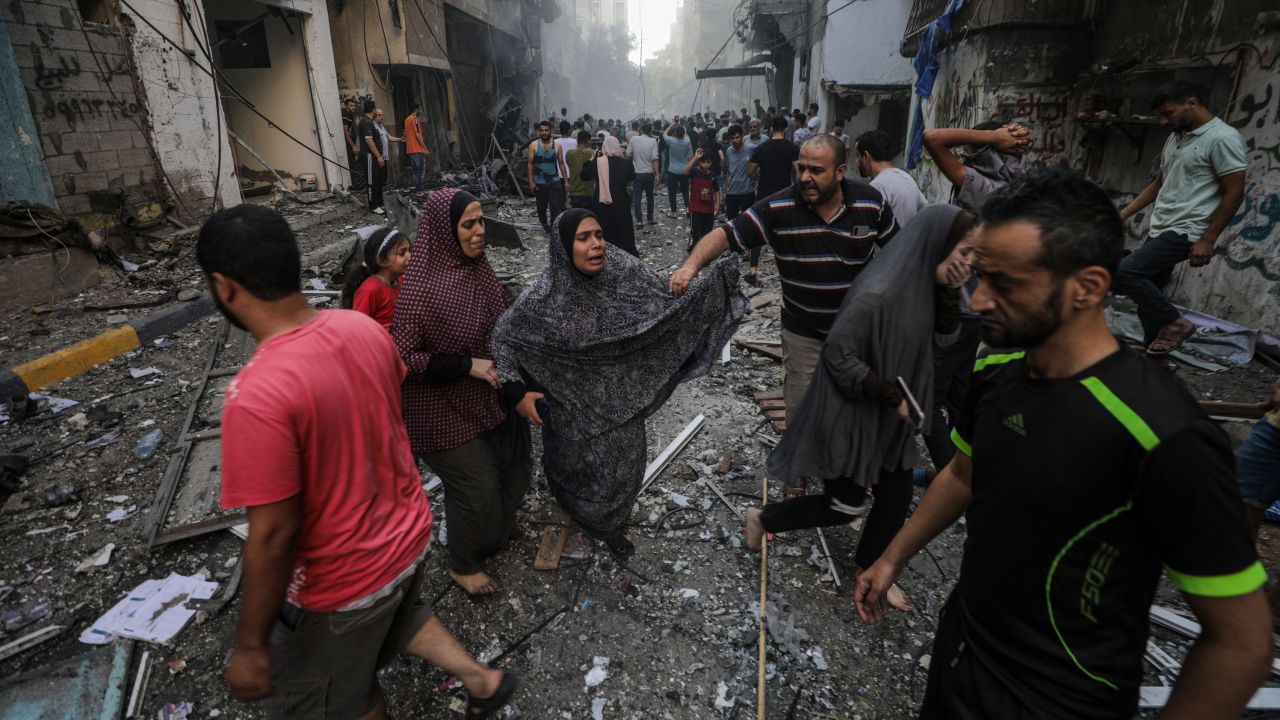
Even as civilians fled southward, Israeli warplanes continued to blast Gaza over the weekend. Videos showed explosions and bodies along a Gaza evacuation route Friday, as tens of thousands of people abandoned their homes on the advice of the IDF.
Extensive destruction could be seen on Salah Al-Deen street – a main route for evacuation – in videos authenticated by CNN. A number of bodies, including those of children, can be seen on on a flat-bed trailer that appears to have been used to carry people away from Gaza City.
The Palestinian Health Ministry said 2,329 civilians have been killed and more than 9,000 injured since the conflict broke out a week ago, with 300 killed in the past 24 hours.
Casualties in Gaza over the past eight days have now surpassed the number of those killed during the 51-day Gaza-Israel conflict in 2014, according to the spokesperson for the Palestinian Health Ministry.
Richard Brennan, a World Health Organization official in Cairo, told CNN that 60 percent of those killed in Gaza the last week were women and children.
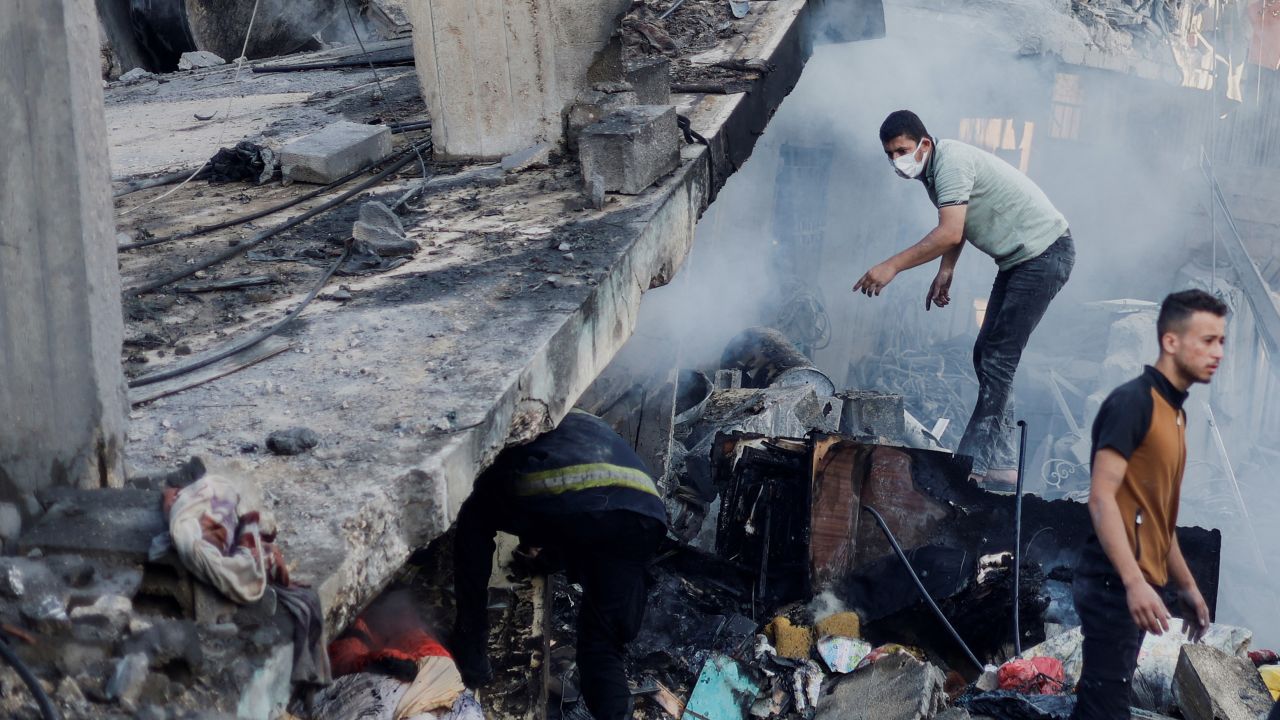
Several United Nations agencies have warned that mass evacuation under siege conditions will lead to disaster, and that the most vulnerable Gazans, including the sick, elderly, pregnant and disabled, will not be able to relocate at all. For days, Israel has cut off the Gaza population’s access to electricity, food and water.
“Despite Israeli announcements suggesting that there are safe areas for people trapped in the Gaza Strip, they are in fact exposed to bombardment throughout the entire territory, including in the south,” said Avril Benoit, executive director of Doctors Without Borders (MSF).
A growing number of nations, global rights groups and organizations are calling on Israel to respect international rules of war, urging the protection of civilians’ lives, and not to target hospitals, schools and clinics. Jordan’s foreign minister warned that Israel’s actions in Gaza are causing a humanitarian disaster and amount to mass punishment for more than 2 million Palestinians.
As food, clean drinking water and medical supplies in Gaza run out, there are urgent pleas for humanitarian aid to be allowed in. Footage showed aid convoys continuing to arrive into Egypt’s El-Arish stadium in preparation to enter Gaza through the Rafah land crossing. On the Gazan side, thousands of people are stuck at the crossing, with families telling CNN they have been unable to cross into Egypt.
Egyptian Foreign Minister Sameh Shoukry told CNN Saturday that Egypt has tried to ship humanitarian aid to Gaza but has not received the proper authorization to do so.
‘Complete catastrophe’ in Gaza
Palestinians who fled south, and those who are still in the north, are rapidly running out of food and water. There is no more electricity, and those with fuel-powered generators will soon live in complete blackout. Internet access, through which residents communicate their plight to the world, is also shrinking.
MSF’s Benoit told CNN Saturday there is a serious water shortage in Gaza with many people beginning to suffer from severe dehydration.
“Everyone there feels like they are likely to be collateral damage,” Benoit said. “The health care system there has always been extra fragile and was considered (a) humanitarian chronic emergency for many, many years, and now it’s a complete catastrophe.”
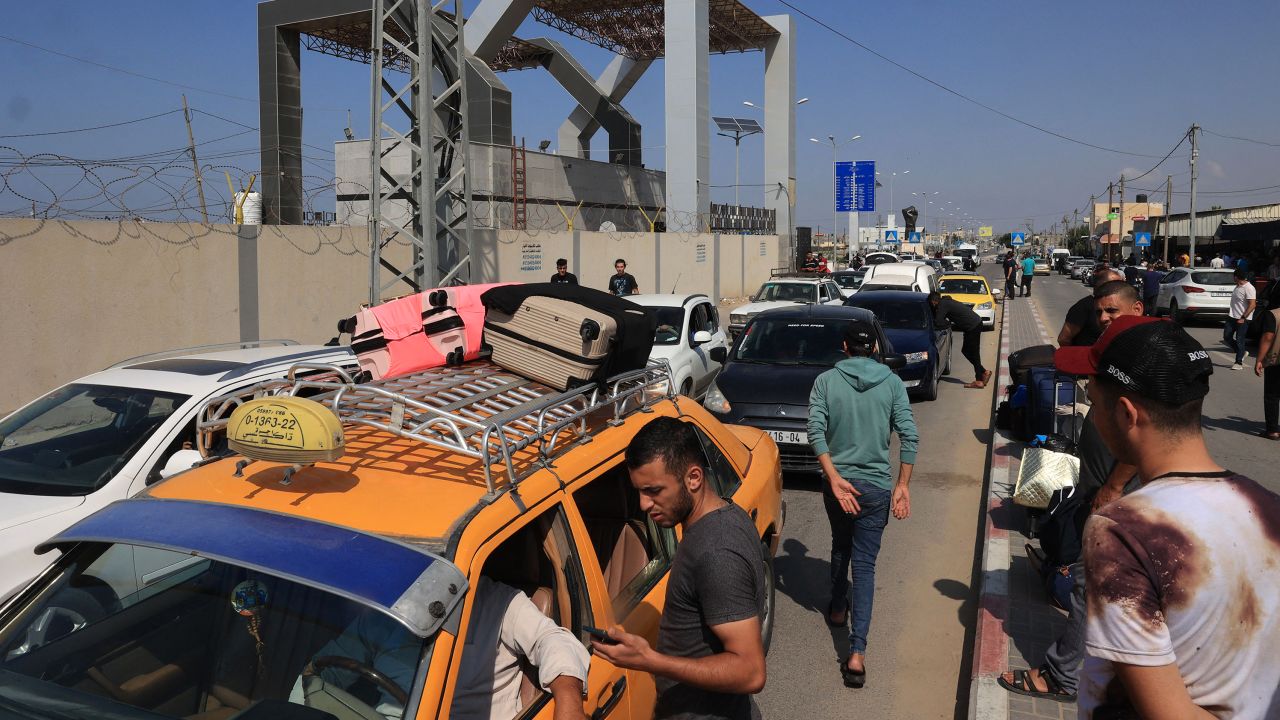
Palestine Red Crescent Society spokesperson Nebal Farsakh told CNN the situation in Gaza is “devastating” and though they had been notified by Israel to evacuate Al-Quds hospital in Gaza City, they did not have the means to do so.
“We are not willing to evacuate because we do not have the means to evacuate our patients,” Farsakh said. “We have around 300 patients at the hospital. Some of them are in the intensive care unit. We have children in incubators. We can’t evacuate them.”
The World Health Organization said Saturday it “strongly condemns Israel’s repeated orders for the evacuation of 22 hospitals” in Gaza, calling it a “death sentence for the sick and injured.”
If patients are forced to move and are cut off from life-saving medical attention while being evacuated, they all face imminent deterioration of their condition or death, the WHO said in a statement.
Health facilities in northern Gaza continue to receive an influx of injured patients and are struggling to operate beyond capacity, with some patients “being treated in corridors and outdoors in surrounding streets due to a lack of hospital beds,” it added.
What would a ground invasion look like?
Israel, which has massed troops and military equipment at the border with Gaza, said its ramped up offensive will feature hundreds of thousands of reservists and encompass “a wide range of operational offensive plans.”
In addition to widespread airstrikes, Israel’s army is preparing troops for an “expanded arena of combat,” the IDF said in a statement on Saturday. The preparations have placed “an emphasis on significant ground operations.”
Hamas has shown a level of military capability far beyond what was previously thought, and a recent CNN investigation found it is probably well-prepared for the next phase of the war.
Complicating an Israeli offensive in Gaza are up to 150 hostages captured by Hamas – including soldiers, civilians, women, children and the elderly – and who are being held in the crowded enclave.
IDF spokesperson Conricus said it is a top priority to get hostages out of Gaza, despite the difficulty that a dense urban area adds to the fight.
Pointing to the “elaborate network of tunnels” that Hamas has, he said hostages “are most likely held underground in various locations.”
“Fighting will be slow. Advances will be slow, and we will be cautious,” he said.
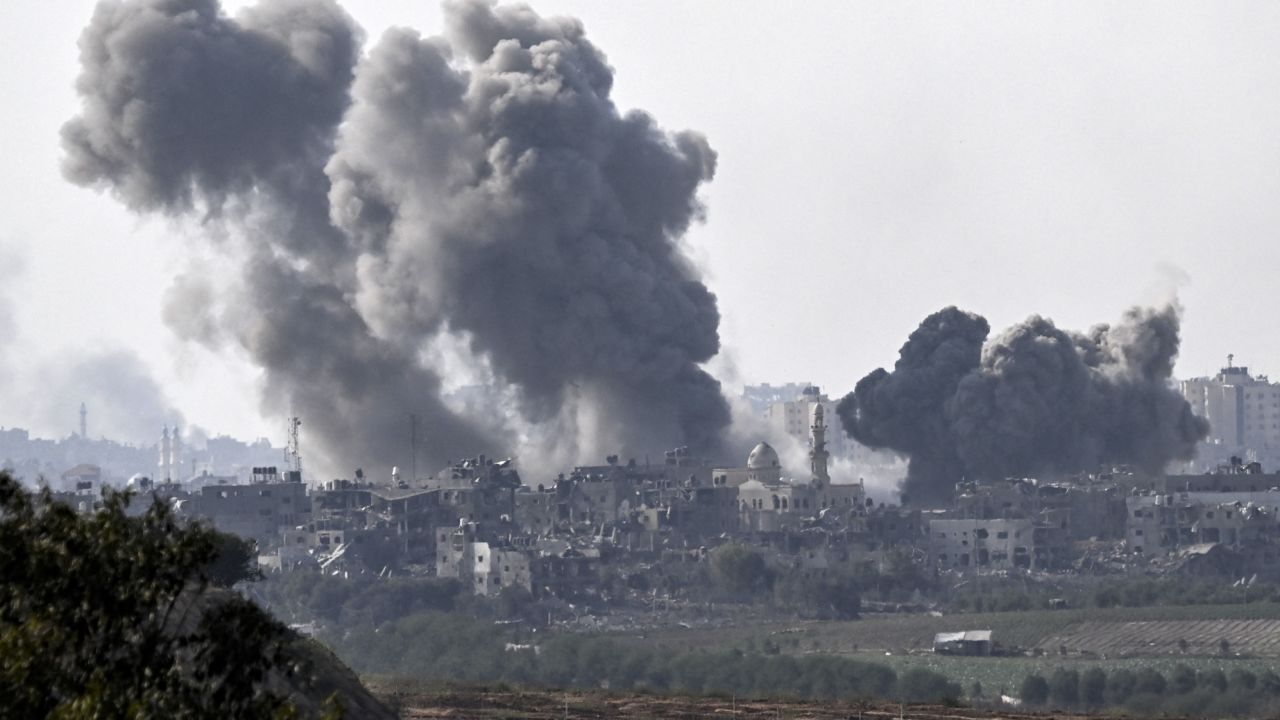
Regional concerns grow
As Israel battles Hamas, it also faces the threat of a wider conflict on new fronts.
Israel has said it is ready in case there are attacks from neighboring Lebanon or Syria.
Syria’s military reported late Saturday that an “air aggression” by Israel, originating from the Mediterranean Sea, damaged Aleppo International Airport and rendered it nonoperational.
Meanwhile, Iran’s Mission to the UN warned on Saturday that if Israel does not stop its attacks on Gaza, “the situation could spiral out of control and ricochet far-reaching consequences.”

The comments came as Iran’s Foreign Minister Hossein Amir-Abdollahian met with Hamas political leader Ismail Haniyeh in Doha, Qatar on Saturday, according to Iran’s official news agency IRNA. The agency said it was the first official meeting between Iranian officials and Haniyeh since surprise Hamas attack on Israel that Hamas called Al-Aqsa storm.
Hostilities with neighboring Lebanon are being closely monitored internationally, as an escalation could draw the powerful Iran-backed Hezbollah paramilitary group into the conflict.
For days, Lebanon-based Palestinian militants have launched rockets into Israel, leading to Israeli attacks on Lebanese territory, including Hezbollah positions. Hezbollah has fired back at Israeli border positions with precision-guided missiles.
On Saturday, Israel returned fire after Hezbollah launched an attack on the disputed territory of the Shebaa farms near the Israel-Lebanon border, with CNN teams on the ground reporting prolonged shelling.
Mourners also gathered Saturday for the funeral of Reuters journalist Issam Abdallah in southern Lebanon after he was killed when Israel fired artillery into the area where he and other journalists were on Friday. The IDF said it was reviewing the circumstances surrounding the incident on the Lebanese border.
In response to the regional security situation, the Pentagon has ordered a second carrier strike group – the USS Dwight D. Eisenhower – to the eastern Mediterranean Sea, joining the strike group led by the USS Gerald R. Ford.
The US warships are not intended to join the fighting in Gaza or take part in Israel’s operations, but the presence of two of the Navy’s most powerful ships is designed to send a message of deterrence to Iran and Iranian proxies in the region.
CNN’s Mariya Knight, Kareem Khadder, Artemis Moshtaghian, Adam Pourahmadi, Sarah El Sirgany, Tamara Qiblawi, Pauline Lockwood, Kareem Khadder, Eyad Kourdi, Sana Noor Haq, Hande Atay Alam and Chloe Liu contributed reporting.


